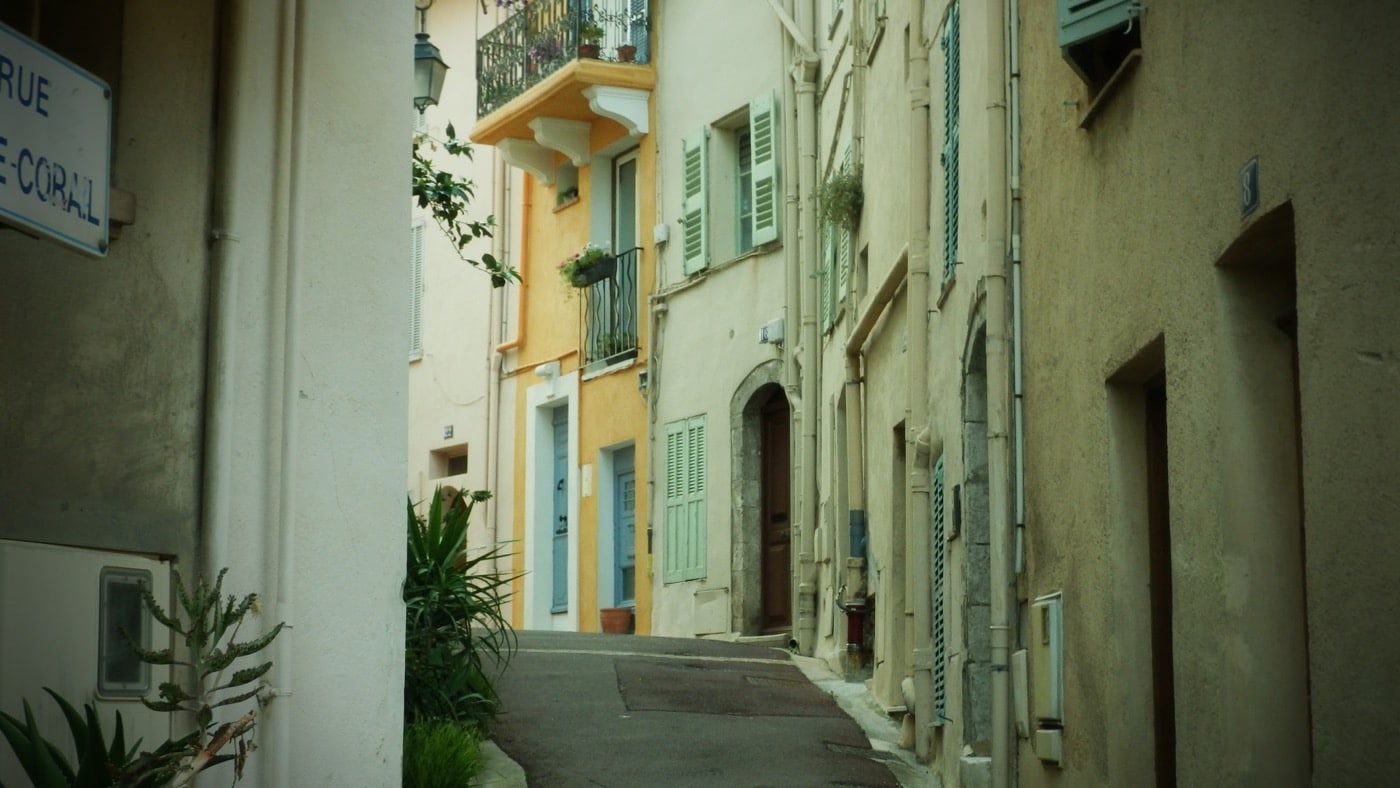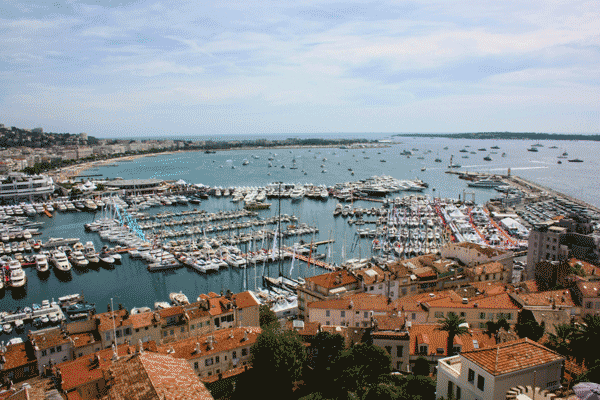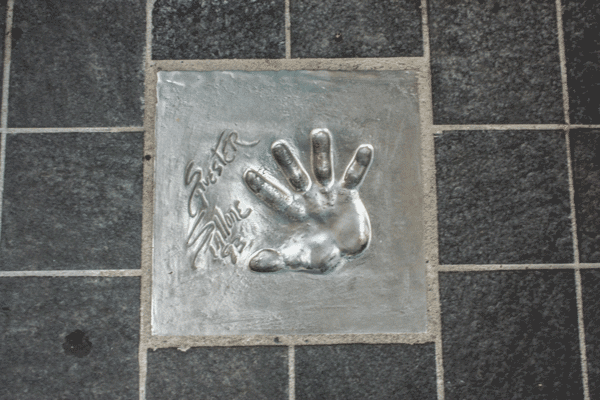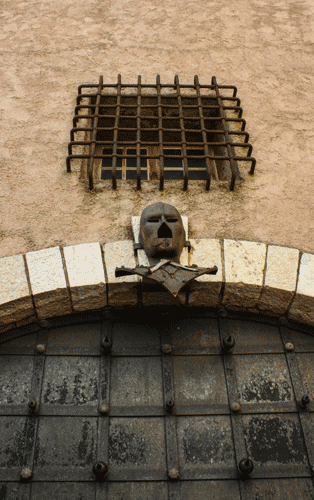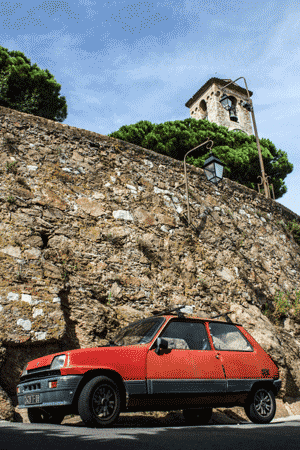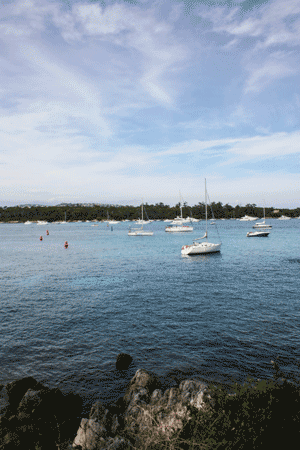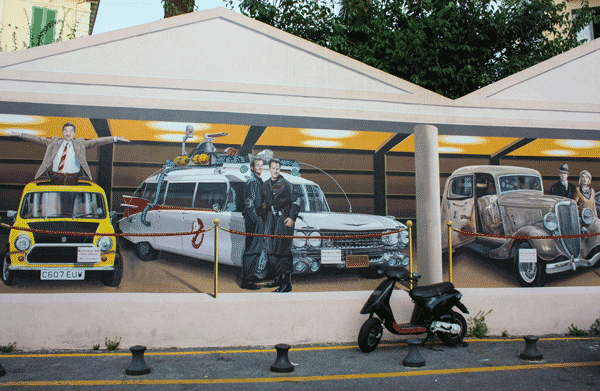Not that it likes to boast, but Cannes moves in famous circles. Every May the great and good of the movie industry descend on the small French town for the Cannes Film Festival, a red carpet event that transforms this Cote d’Azur resort into a celebrity circus. Actually, Cannes does like to boast; walls in the city have been adorned with huge murals of the stars. There’s Marilyn Monroe (of course), James Dean, Robert De Niro and, if you look hard enough, you’ll even find Mr. Bean and his yellow Mini. The stardust has also been sprinkled outside the Palace des Festivals where you can stroll along the walk of fame, a slab-lined sidewalk where the handprints of VIP visitors have left their indelible mark on the city. It’s all very Hollywood and decidedly un-French.
And like Hollywood, Cannes is prone to coming across a bit superficial. Nowhere in town is this more evident than on La Croisette, an exclusive seafront boulevard lined with Belle Époque hotels, upmarket boutiques and private beaches. Designer dogs, sporty convertibles and fake boobs are also par for the course.
Yet, behind the Botox, Cannes is a charming little city of myths and legends. This is, after all, the home of the Man in the Iron Mask, a mysterious prisoner who was incarcerated here during the reign of Louis XIV. I’m reminded of this unknown jailbird by an eerie iron mask, embellishing the entrance of a spooky looking building in Cannes’ Old Town. The old cobbled streets wind up a hill known as Le Suquet, once inhabited by fishermen who plied their trade along the Cote d’Azur. Today these narrow alleyways are lined with bustling bars and restaurants. As I press on to the summit, the smell of freshly baked bread and grilled fish threatens to tempt me off course.
But I do make it to the top where I’m rewarded for my restraint by a defunct citadel from the 12th century and the charming Chapel of St Anne, home to the Musee de la Castre. It’s a curious little museum exhibiting an eclectic collection of artefacts demonstrating early evidence of civilisations that somehow found their way here from such diverse places as Peru and remote Pacific islands. On display also are exhibits from local artists depicting Cannes during the halcyon days of The Belle Époque, before World War I spoiled the fun for Europe’s rich and famous who regularly summered along the “Cote”. The highlight for me, though, is the view from the roof, a sweeping panorama that could only be better viewed from the cockpit of a private helicopter (of which there will be plenty when the Film Festival begins). Looking over the city I see a mosaic of terracotta roofs, the Mediterranean glistening in the afternoon sun and multimillion dollar yachts bobbing up and down in the port. Punctuating the horizon are sailboats and the islands of Ile Saint-Marguerite and Ile Saint-Honorat.
These islets are two of Cannes’ most interesting attractions, particularly Ile Saint-Marguerite, where the Man in the Iron Mask was imprisoned. A sucker for legends, I leave the roof and head for the ferry port to board the next boat to the island. It’s about a 15 minute ferry ride, a journey that offers a glimpse into how the other half live; cutting through waves we pass luxury yachts where bronzed bodies are catching rays and champagne glasses clink. It’s a far cry from the dark and dingy cell I’m in a half hour later. Sitting in the corner of this dismal room, I try to put myself in the shoes (or rather, the mask) of the unknown prisoner incarcerated here in the late 17th century for 11 years. Today his room can be found in the Musee de la Mer, which has very little information about the prisoner. Some historians speculate that he was the illegitimate half-brother of the reigning monarch, Louis XIV, while others suggest he was a military general incarcerated for retreating from a battle and leaving behind his wounded men. A few claim he was the illegitimate son of Charles II of England. However, most agree that the mask was one of black velvet rather than one made of iron but that detail doesn’t make for a great tale.
Legends aside, Ile Saint-Marguerite is also a popular retreat for anyone looking to escape the hustle bustle of Cannes. The wooded island is great for hiking, the beaches are public and the sea is about as clear as the Mediterranean gets. However, it was a bit chilly the day I visited so I headed back to Cannes and caught another ferry to Ile Saint-Honorat (alas, no correspondence between the two islands).
Ile Saint-Honorat offers a striking contrast to Cannes. While people on the mainland pursue status and hedonism in the city’s bars and boutiques, the island’s monks live simple, self-sufficient lives as they have since 410 AD. Consequently, Ile Saint-Honorat has a spiritual ambience, particularly around the corridors of the magnificent 15th century monastery which is open for visitors. There’s also a fantastic little restaurant on the island called La Tonnelle, open daily for lunch. Its ever-changing menu revolves around seasonal, Provencal ingredients, although they’re not giving it away; wincing at the price for a seafood gnocchi, I give in anyway. To wash it down I order a glass of white wine made on the island by the resident monks. Behind the fancy bottle and hefty price tag was a wine that, although not entirely to my taste, offered depth and character. In many ways, it was a perfect metaphor for Cannes.
[alert type=white]
The country code for France is 33.
Where to Stay:
Martinez Hôtel – If you want to sleep under the same roof as the stars then book yourself into the Hotel Martinez, one of the Cote d’Azur’s finest. Located on La Croisette, guests have access to a private beach, swimming pool and spa. Meanwhile its Michelin-starred restaurant, La Palme d’Or, has a reputation for exceptional cuisine. Little wonder the hotel attracts a Hollywood cast. 73 Boulevard de la Croisette, 04 9298 7300, www.hotel-martinez.com
Suite Novotel – If you don’t have a Brad Pitt budget then Suite Novotel is a happy compromise between comfort and cost. This stylish, all-suite hotel is just 10 minutes from the railway station and offers some great web deals. The spacious rooms all come with separate bathrooms and toilets, a small kitchenette, large working spaces and plasma televisions. 46 bis boulevard Carnot, 04 9706 7777, www.suitenovotel.com
Where to Eat:
Le Mesclun – This family run eatery is one of Le Suquet’s most popular thanks to the creative Mediterranean cuisine being rustled up in its kitchen. Walnut panelling abounds in the restaurant, which serves gourmet food in warm and unpretentious surroundings. The prices are typically Cote d’Azur and so is the wine menu, which reads like War and Peace. Well, not quite, but it’s a lengthy old list. 16 Rue Saint-Antoine, 04 9399 4519, www.lemesclun-restaurant.com
La Tonnelle – Situated on Ile Saint-Honorat, La Tonnelle can only be reached by boat and it’s only open for lunch. The waterfront restaurant shares the island with the monks of the Abbaye de Lerins, who produce a range of homemade wines, which you can sip while taking in the sea views. The Mediterranean dishes are delicious, albeit a tad unadventurous. Ile Saint Honorat, 04 9299 5424, www.tonnelle-abbayedelerins.com
What to See & Do:
Musée de la Castre – Perched on the hilltop of Le Suquet, this museum is housed in the Chapel of St Anne and displays eclectic exhibits ranging from nineteenth-century paintings by local artists to primitive weapons found in South America. Don’t miss the views from the roof, which are best at sunset. Le Suquet, 04 9338 5526
The Walls of Cannes – To pay homage to its cinema heritage, the Municipality of Cannes has been commissioning artists to paint huge, film-themed murals on the side of local buildings. There are 14 of them scattered around the city and the Cannes Tourist Office will provide you with a map detailing their locations. It’s free, photogenic entertainment. Cannes Tourist Office, Palais des Festivals, La Croisette, 04 9299 8422, www.cannes.com
Ile Saint-Marguerite – A blissful distraction from nearby Cannes, Ile Saint-Marguerite is a scenic 15 minute boat ride from the mainland and is popular with hikers, sunbathers and swimmers. But its natural beauty hides a horrible history; this island was used to incarcerate the Man in the Iron Mask during the reign of Louis XIV. You can visit the mystery prisoner’s cell at the Musee de la Mer. Musée de la Mer, Ile Saint-Marguerite, 04 9348 1817
[/alert]

